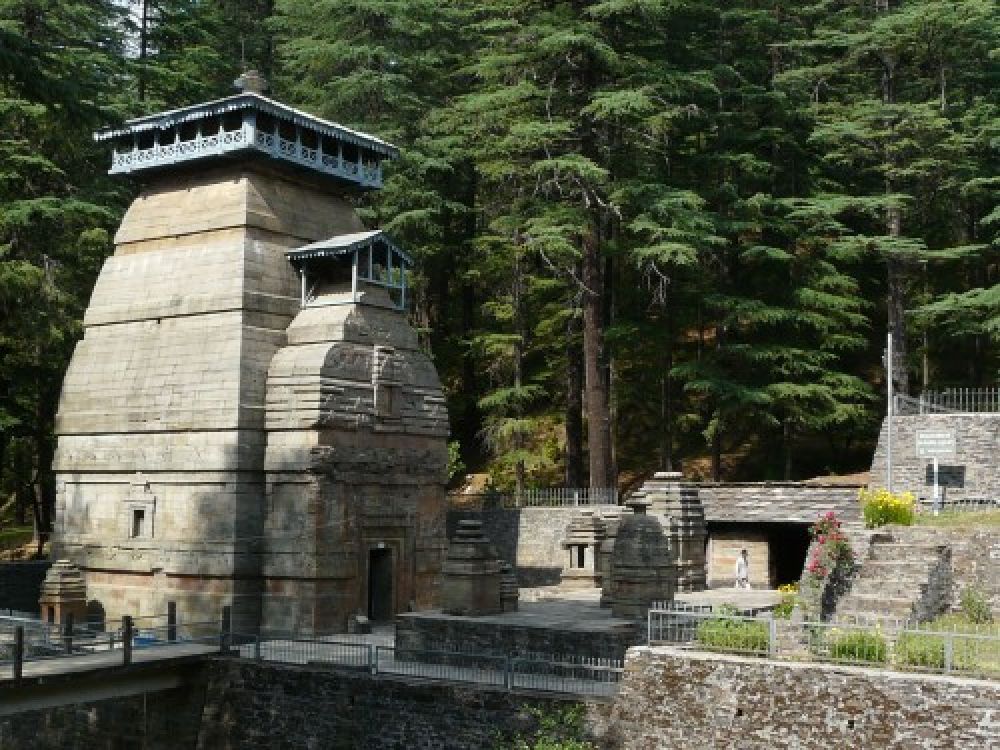

The Dandeshwar Temple Group, located in the serene and picturesque Jageshwar Valley in Uttarakhand, India, is a significant site for both religious pilgrimage and historical tourism. Jageshwar is believed to be the abode of one of the twelve Jyotirlingas, and the Dandeshwar Temple complex is an integral part of the spiritual landscape here.
The temples date back to between the 7th and 14th centuries AD and are part of a larger collection of over 100 temples in the area dedicated to Lord Shiva. These shrines were largely developed during the Chand dynasty's rule. They represent an important piece of Himalayan art and architectural development influenced by the Gupta and post-Gupta periods. The stone temples exhibit the exquisite craftsmanship of the artisans of the era and feature a range of stone carvings and iconography central to Hindu theology.
Tourism in Jageshwar has historical roots that trace back to pilgrimages made by devotees across the centuries. However, it was not until the late 20th century that Jageshwar began gaining popularity as a tourism hub. The destination caught the attention of historians, art enthusiasts, and spiritual seekers globally, which led to an increase in visitor numbers.
Over the years, the temple complex faced threats from natural elements and human activities. Conservation efforts have been made to restore and maintain the temples, and the Archaeological Survey of India now protects the site. As a result of these efforts, tourism in Jageshwar, and specifically the Dandeshwar Temple Group, has grown responsibly, with an emphasis on preserving its archaeological integrity.
Eco-Tourism: In recent years, there has been a push to promote eco-tourism in Jageshwar. Locals and authorities are encouraging visitors to engage with the natural environment respectfully, often offering guided tours that highlight both the spiritual and ecological significance of the valley.
Homestays and Cultural Interaction: There is a growing trend of visitors choosing homestays over conventional hotels to immerse themselves in the local Kumauni culture. This community-based tourism supports the local economy and provides an authentic experience for tourists.
Wellness Tourism: With the serene environment and pristine air quality, Jageshwar is becoming a sought-after destination for wellness tourism. Tourists come here to participate in yoga and meditation retreats set against the backdrop of the Himalayan forests.
Archaeological and Spiritual Tourism: Interest in the spiritual and archaeological significance of the Dandeshwar Temple Group continues to attract visitors. Guided tours focusing on the historical context and religious importance of the temples are popular attractions for history buffs and spiritual seekers alike.
The best time to visit the Dandeshwar Temple Group in Jageshwar is between March and June or between September and November to avoid the heavy monsoon season and the extreme cold of the Himalayan winters. The temples are accessible via road, and the nearest major town is Almora.
Whether you are seeking spiritual solace, historical insights, or simply the tranquility of the mountains, the Dandeshwar Temple Group in Jageshwar offers a timeless journey that intertwines the past with the present in the lap of nature's splendor.